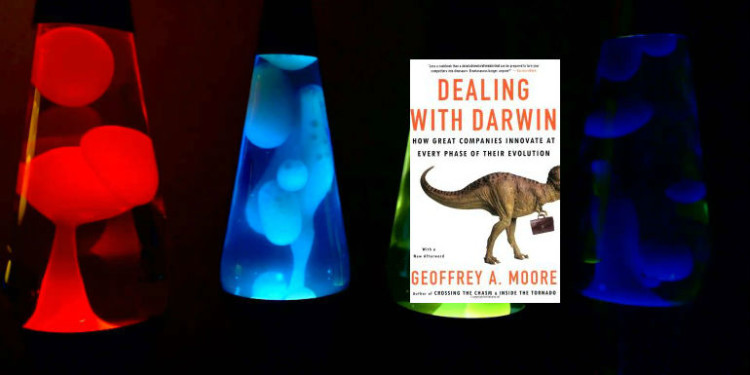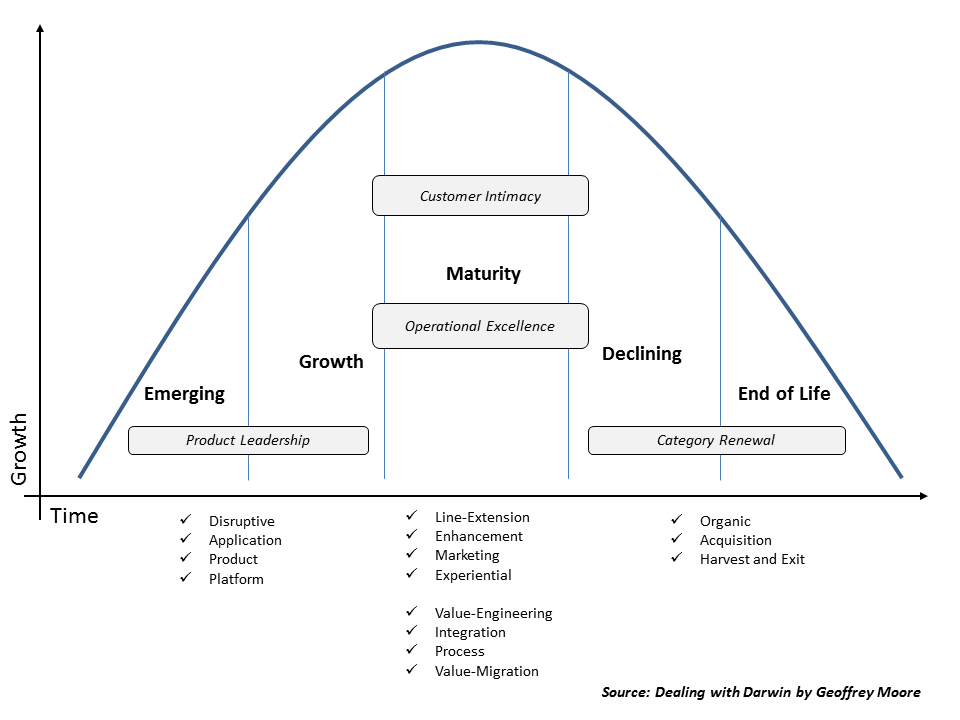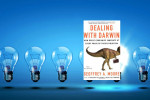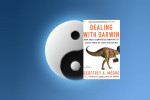Types of Innovation

Innovation isn’t confined to break-out, market-creating, blockbuster products and services. There are innovation types available for each phase of the category life cycle, from growth through maturity and decline, to end of life.
Dealing with Darwin by Geoffrey Moore
Managing innovation
Dealing with Darwin is about managing the internal and external context of innovation. Moore asks: “how can we innovate forever?” Moore believes that innovation is not a choice–it is mandatory for survival.
A key theme of the book is that there are many types of innovation and management teams must choose the right type for their company and market. A key dynamic that Moore describes is the interplay between innovation and inertia, the two forces within any enterprise. The third key concept in the book is core and context. Core is all the activities which create differentiation relative to competitors. Context is all the other activities that the organization performs. Moore’s strategy is to “extract resources from context and re-apply to core.” The book provides various case studies as examples of how that strategy can be well executed.
Moore also sets out to bust several innovation myths: innovation for its own sake is valuable, it’s harder to innovate in mature categories, and there is only way to innovate (i.e., all companies do it the same way).
Matching innovation type to life cycle phase
The innovation types for each life cycle phase are grouped according to four value disciplines that identify strategies which can be activated to achieve new offerings, increased customer service, cost efficiency, and improved portfolio management. In Dealing with Darwin, Moore also maps innovation strategies to two primary business architectures: complex-systems and volume-operations. Considering innovation along these two lines allows a company to select its most effective strategy.
The single most important act of strategy leadership is to select the innovation vector upon which your company will develop its sustainable competitive advantage—its core. To do this properly requires a deeper understanding of the properties of each of these innovation types.
Moore identifies five life cycle categories for products and services: emergent, growth, maturity, decline, and end of life. Disruptive innovation, the type of innovation which is most often associated with high technology, occurs in the emergent category. This phase is described in his book, Crossing the Chasm, and involves the leap from early adopters to mainstream buyers where it enters the growth phase. Although disruptive innovation is highly desirable, it is not the only type of innovation available to companies. Innovation types span the entire category life cycle and can contribute to overall corporate growth. In Dealing with Darwin, Moore devotes one chapter to each life cycle phase and its innovation strategies. This model of innovation broadens your outlook on opportunities for growth and new offers.
Moore overlays the category maturity lifecycle with the four value disciplines described by Michael Treacy and Fred Wiersema in The Discipline of Market Leaders. The four disciplines are: product leadership, customer intimacy, operational excellence, and category renewal.
Product Leadership
This group of innovation types is characterized as very powerful, expensive and risky. Therefore, they must be executed in high growth markets to realize the necessary returns and market share wins. Here’s Moore discussing this zone.
Disruptive Innovation – Products and services which create technology discontinuities and new market categories are part of this set. Existing standards and value chains are over-turned in favor of new approaches. Digital media (music, film) and social media networks are examples.
Application Innovation – Finding new uses, new audiences, and re-combining existing functionality are attributes of this category. Although standards change, existing value chains are disrupted. Examples from the book are the application of Macintosh computers to desktop publishing and using fault tolerant computers to run ATM networks.
Product Innovation – Here, existing products are improved through functionality and usability for existing markets. Success is achieved through time to market and patent protection. Improvements such as wireless connnectivity in laptops, cameras in cell phones, and hybrid engines in cars are examples of product innovation. Other examples are moving
Platform Innovation – Platform leaders create foundational or ingredient systems on which third parties can build further value. Success here relies on architectural leadership, relationship building, and creating benefits for the entire ecosystem. Famous examples are Intel and Microsoft.
Customer Intimacy
This group of innovation types are less risky and less powerful, but can give a company money back through cost and efficiency savings. Due to its lower power potential, this group is better suited for mature markets where market share is more likely to be constant. Here’s Moore talking about the Customer Intimacy zone.
Line-Extension Innovation – Line-extensions introduce new sub-categories within existing offering groups. Much of the infrastructure stays the same, but user-facing features or packaging changes sufficiently to create novel products and services. Examples are SUVs for an auto manufacturer or laptops for a computer manufacturer.
Enhancement Innovation – This is a smaller, more targeted, modification or feature enhancement to an existing offering such as Teflon coating for pans or higher pixel ratings for digital cameras.
Marketing Innovation – Marketing innovation uses new or highly effective marketing campaigns such as viral strategies, social media, or crowd sourcing to outpace competitors.
Experiential Innovation – This category occurs most frequently in service offerings, or by adding a service to an existing product. Here the overall experience of a offering is enhanced through personalization, 1:1 attention, or a higher level of value add.
Operational Excellence
Like Customer Intimacy, the Operational Excellence zone is less risky and less powerful, but can give a company money back through cost and efficiency savings. Due to its lower power potential, this group is better suited for mature markets where market share is more likely to be constant. Here’s Moore talking about the Operational Excellence zone.
Value-Engineering Innovation – The goal in this category is to decrease costs in manufacturing / development for existing offers without changing their composition. Optimizing component parts and the overall assembly / creation process are tactics here.
Integration Innovation – This is the flip-side of value-engineering innovation–the customer’s cost of ownership is decreased by simplification and/or consolidation into a single entity that can be managed more effectively than multiple pieces.
Process Innovation – The goal of this type of innovation is to reduce waste and cost from processes that support and enable the offer, rather than offer itself. Inventory management and quality programs can be used here.
Value-Migration Innovation – This type of innovation is described in Adrian Slywotzky’s book Value Migration. Companies taking this approach will move away from segments of the value chain which are commoditized to segments which are richer in profit and growth opportunities.
Category Renewal
Category renewal considerations come into play when a business is declining and must be wound down or immediately exited.
Organic Innovation – Re-positioning a company to a growth category is the goal of organic innovation. Examples are IBM moving from hardware/software to services and Microsoft moving into browser software.
Acquisition Innovation – This strategy equates to mergers and acquisitions, either as a buyer or seller.
Harvest and Exit – This decision effectively closes out a line of business.
Four zones of innovation
In this video Moore gives a summary of four zones of innovation.







